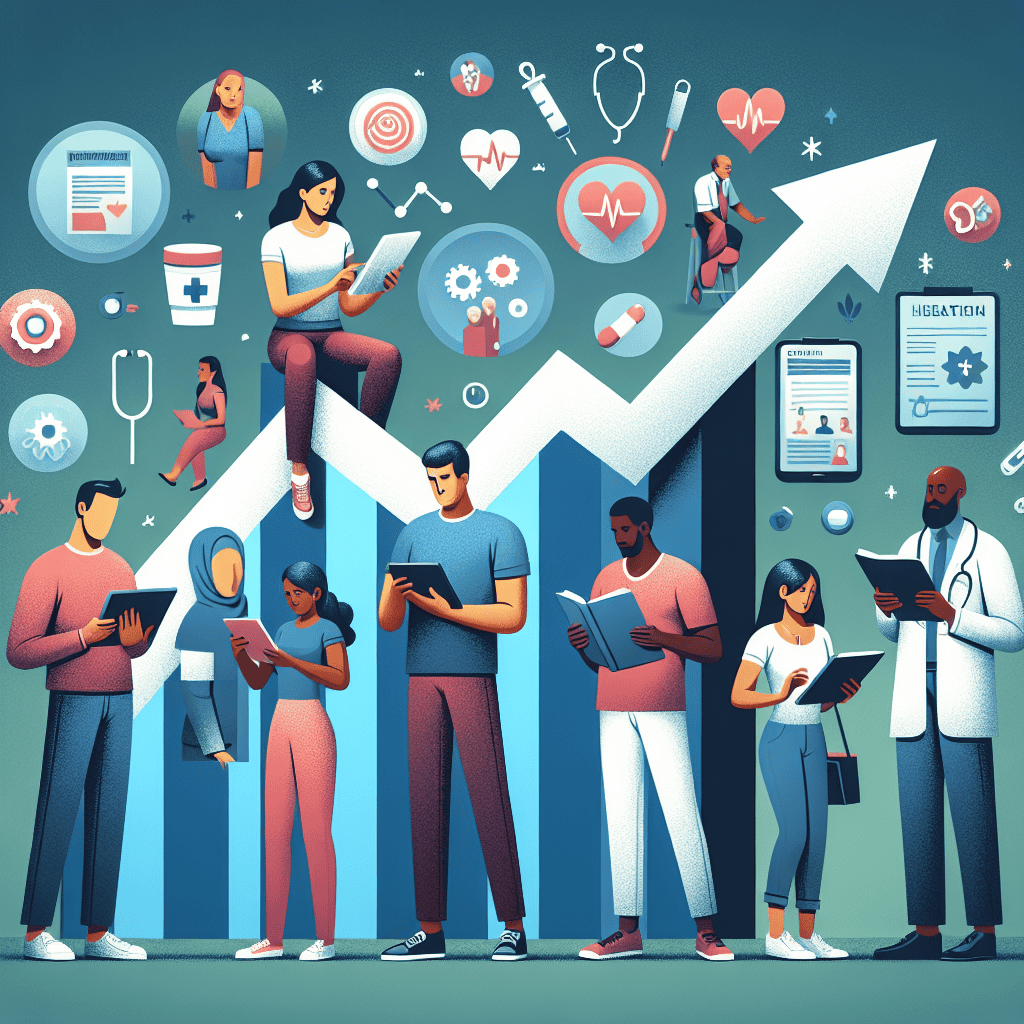-
Table of Contents
- The Growing Importance of Health Literacy Among Patients
- Understanding Health Literacy
- The Definition and Scope of Health Literacy
- The Impact of Health Literacy on Health Outcomes
- The Economic Impact of Low Health Literacy
- Health Literacy and Health Disparities
- The Role of Technology in Health Literacy
- Challenges in Health Literacy
- Complex Medical Terminology
- Cultural and Language Barriers
- Limited Access to Resources
- Health Literacy in the Digital Age
- The Role of Healthcare Providers
- Strategies to Enhance Health Literacy
The Growing Importance of Health Literacy Among Patients

In an era where information is at our fingertips, the ability to understand and use health information effectively has never been more crucial. Health literacy, the capacity to obtain, process, and understand basic health information and services needed to make appropriate health decisions, is a vital component of patient empowerment and healthcare outcomes. This article delves into the growing importance of health literacy among patients, exploring its impact on healthcare, the challenges faced, and strategies to enhance it.
Understanding Health Literacy
Health literacy is more than just the ability to read pamphlets and make appointments. It encompasses a range of skills necessary for individuals to navigate the healthcare system, understand their health conditions, and make informed decisions. As healthcare becomes increasingly complex, the need for health literacy grows.
The Definition and Scope of Health Literacy
Health literacy is defined by the World Health Organization as the cognitive and social skills that determine the motivation and ability of individuals to gain access to, understand, and use information in ways that promote and maintain good health. It involves a range of skills, including reading, writing, numeracy, communication, and critical thinking.
These skills are essential for tasks such as understanding prescription labels, following medical instructions, and making informed decisions about treatment options. Health literacy also involves the ability to navigate the healthcare system, including understanding insurance forms and accessing preventive services.
The Impact of Health Literacy on Health Outcomes
Research has consistently shown that health literacy is a strong predictor of health outcomes. Patients with low health literacy are more likely to experience poor health outcomes, including higher rates of hospitalization, less frequent use of preventive services, and poorer management of chronic conditions.
For example, a study published in the Journal of General Internal Medicine found that patients with low health literacy were more likely to have poor glycemic control and higher rates of complications from diabetes. Similarly, a study in the American Journal of Public Health found that low health literacy was associated with higher mortality rates among elderly patients.
The Economic Impact of Low Health Literacy
Low health literacy not only affects individual health outcomes but also has significant economic implications. The National Academy of Medicine estimates that low health literacy costs the U.S. economy between $106 billion and $238 billion annually. These costs arise from increased hospitalizations, longer hospital stays, and higher use of emergency services.
Improving health literacy can lead to significant cost savings by reducing unnecessary hospitalizations and improving the management of chronic conditions. For instance, a study in Health Affairs found that improving health literacy could save the U.S. healthcare system up to $25 billion annually.
Health Literacy and Health Disparities
Health literacy is closely linked to health disparities. Populations with low health literacy often include racial and ethnic minorities, older adults, and individuals with low socioeconomic status. These groups are more likely to experience barriers to accessing healthcare and poorer health outcomes.
Addressing health literacy is a critical step in reducing health disparities. By improving health literacy, healthcare providers can empower patients to take control of their health and make informed decisions, ultimately leading to better health outcomes and reduced disparities.
The Role of Technology in Health Literacy
Technology has the potential to enhance health literacy by providing patients with access to a wealth of information and resources. Digital health tools, such as mobile apps and online patient portals, can help patients manage their health and access information in a convenient and user-friendly way.
However, technology also presents challenges for health literacy. Patients with low digital literacy may struggle to use these tools effectively, and the sheer volume of information available online can be overwhelming. Healthcare providers must ensure that digital health tools are accessible and easy to use for all patients, regardless of their level of health literacy.
Challenges in Health Literacy
Despite its importance, health literacy remains a significant challenge for many patients. Several factors contribute to low health literacy, including complex medical terminology, cultural and language barriers, and limited access to resources. Understanding these challenges is essential for developing effective strategies to improve health literacy.
Complex Medical Terminology
Medical terminology can be complex and difficult for patients to understand. Terms like “hypertension” or “hyperlipidemia” may be unfamiliar to patients, leading to confusion and misunderstanding. This complexity can be a barrier to effective communication between patients and healthcare providers.
Healthcare providers must be mindful of the language they use when communicating with patients. Using plain language and avoiding medical jargon can help patients better understand their health conditions and treatment options.
Cultural and Language Barriers
Cultural and language barriers can also impact health literacy. Patients from diverse cultural backgrounds may have different beliefs and practices related to health and healthcare. These differences can affect how patients perceive and understand health information.
Language barriers can further complicate communication between patients and healthcare providers. Patients with limited English proficiency may struggle to understand medical instructions or communicate their symptoms effectively. Providing language services, such as interpreters or translated materials, can help bridge these gaps and improve health literacy.
Limited Access to Resources
Access to resources is another critical factor in health literacy. Patients with limited access to healthcare services, educational materials, or digital tools may struggle to obtain the information they need to make informed decisions about their health.
Addressing these access issues requires a multifaceted approach. Healthcare providers can play a role by offering educational materials and resources in various formats, such as print, digital, and audio. Community organizations can also help by providing support and resources to underserved populations.
Health Literacy in the Digital Age
The digital age presents both opportunities and challenges for health literacy. On one hand, digital tools can provide patients with access to a wealth of information and resources. On the other hand, the sheer volume of information available online can be overwhelming, and not all sources are reliable or accurate.
Patients must be equipped with the skills to evaluate the credibility of online health information. Healthcare providers can help by guiding patients to reputable sources and teaching them how to assess the quality of information they find online.
The Role of Healthcare Providers
Healthcare providers play a crucial role in improving health literacy. Effective communication is key to ensuring that patients understand their health conditions and treatment options. Providers must be trained to communicate clearly and effectively, using plain language and visual aids when necessary.
Providers can also help by assessing patients’ health literacy levels and tailoring their communication strategies accordingly. This may involve using teach-back methods, where patients are asked to repeat information in their own words, to ensure understanding.
Strategies to Enhance Health Literacy
Improving health literacy requires a comprehensive approach that involves healthcare providers, patients, and the broader community. Several strategies can be employed to enhance health literacy and empower patients to take control of their health.





